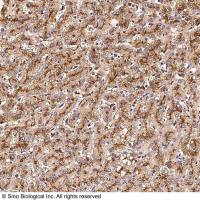Pathogenesis and Molecular Biology of HSV Latency and Ocular Reactivation in the Rabbit
互联网
互联网
相关产品推荐

GLU-1D-1D/GLU-1D-1D蛋白/GLU-D1-1B蛋白/Recombinant Triticum aestivum Glutenin, high molecular weight subunit DX5 (GLU-1D-1D), partial重组蛋白
¥69
![Tgfb1/Tgfb1蛋白Recombinant Rat Transforming growth factor beta-1 proprotein (Tgfb1)重组蛋白Tgfb1; Transforming growth factor beta-1 proprotein [Cleaved into: Latency-associated peptide; LAP); Transforming growth factor beta-1; TGF-beta-1)]蛋白](https://img1.dxycdn.com/p/s14/2024/0914/559/6161996242349384381.jpg!wh200)
Tgfb1/Tgfb1蛋白Recombinant Rat Transforming growth factor beta-1 proprotein (Tgfb1)重组蛋白Tgfb1; Transforming growth factor beta-1 proprotein [Cleaved into: Latency-associated peptide; LAP); Transforming growth factor beta-1; TGF-beta-1)]蛋白
¥2832

Cathepsin B Antibody, Rabbit PAb, Antigen Affinity Purified | Cathepsin B 兔多抗 (抗原亲和纯化)
¥1699

葡聚糖凝胶 ® G-100,9050-94-6,BioReagent, for molecular biology, DNA grade, medium,阿拉丁
¥4199.90

HSV-Tag Mouse mAb(bsm-33119M)-100ul/500ul/200ug
¥980
相关问答

